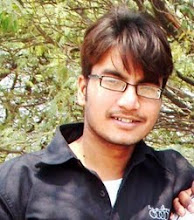Iceland is Europe's westernmost country, the second largest island in the North-Atlantic Ocean, a little over three-hours flight from London, Paris, Amsterdam, Copenhagen, Oslo and Stockholm.
Iceland is the most sparsely populated country in Europe, with an average of about three inhabitants per square kilometer. Almost four-fifths of the country is uninhabited, the population being limited to a narrow coastal belt, valleys, and the lowland plains in the South and Southwest.
The first permanent settlers in Iceland were Norsemen from Scandinavia, arriving in the late 9th century, and Celts from the British Isles. The language of Iceland was Old Norse from the outset, but there are traces of Celtic influence in some of the Eddaic poems, in person and place names, and even in the appearance of present-day Icelanders.
Literacy has been universal in Iceland since the end of the eighteenth century. School attendance was made obligatory for all children aged ten through 14 in 1907. In 1946 compulsory school attendance was extended, and at present it covers the ages between seven and 16. Those who wish to continue their education go to various specialized schools or to secondary schools. There are eight universities in Iceland. The Icelandic system of research and development is a multilevel system with a dispersed decision-making structure. It has a number of full-fledged research institutions, essential funds and a strong force of well-trained scientists, and covers all major fields in science and technology.
The established church in Iceland is the State Evangelical Lutheran Church. There are many other Lutheran churches in Iceland, Roman Catholic churches in Reykjavik and Akureyri, and a number of churches for other religious congregations. The breakdown in church membership is: State Church of Iceland: 92 percent, two percent, other Lutheran denominations, three percent, Roman Catholics, 0.9 percent and other religious affiliations, 3. 8 percent.
The Althingi, the world's oldest functioning legislative assembly, was established in the year 930 A. D. Iceland has a strong economy, low unemployment, and low inflation. Per capita income is among the highest in the world.
In environmental terms, Iceland is unique. With a land area of 103,000 km², Iceland is about the same size as Ireland or the State of Virginia. The interior of the country contains stunning contrasts. It is largely an arctic desert, punctuated with mountains, glaciers, volcanoes and waterfalls. Most of the vegetation and agricultural areas are in the lowlands close to the coastline.
Climate
Iceland has a relatively mild coastal climate. The average summer temperature in Reykjavik, is 10. 6°C/51°F in July, with average highs of 24. 3°C/76°F. The average winter temperature in Reykjavik is similar to New York City's, about 0°C/32°F in January (average highs are 9. 9°C/50°C). Usually the weather is very changeable, although it seldom snows in July.
The mild climate stems from the Gulf Stream and attendant warm ocean currents from the Gulf of Mexico. The weather is also affected by the East Greenland polar current curving southeastwards round the north and east coasts. For two to three months in summer there is continuous daylight in Iceland, and early spring and late autumn enjoy long twilight. However, mid-winter brings only a few hours of sunlight
Bits of information - Republic of Iceland
National name: Lýðveldið Ísland
Area: 39,768 sq mi (103,000 sq km)
Population (2008 est.): 319,756 (growth rate: 0.7%); birth rate: 14.1/1000; infant mortality rate: 3.5/1000; density per sq mi: seven
Capital and largest city: Reykjavik, City- 274.5 km2 120,165(city population)
Monetary unit: Icelandic króna
Language: Icelandic
Ethnicity/race: homogeneous mixture of descendants of Norwegians and Celts
Literacy rate: 99.9% (2008 est.)
Economic summary: GDP/PPP (2008 est.):$12.664 billion; per capita $40,024.
Unemployment: 4% (Jan. 2009 est.).
Agriculture: potatoes, turnips; cattle, sheep; fish
Labor force: 159,000 (2000); agriculture 5.1%, fishing and fish processing 11.8%, manufacturing 12.9%, construction 10.7%, other services 59.5% (1999).
Industries: fish processing; aluminum smelting, ferrosilicon production, geothermal power; tourism.
Natural resources: fish, hydropower, geothermal power, diatomite.
Exports: $2 billion (f.o.b., 2000): fish and fish products 70%, animal products, aluminum, diatomite and ferrosilicon.
Imports: $2.2 billion (f.o.b., 2000): machinery and equipment, petroleum products; foodstuffs, textiles, wood, foodstuffs, fabrics.
Major trading partners: EU, U.S., Japan.
Communications: Telephones: main lines in use: 186,000 (2007); mobile cellular: 327,639 (2009). Radio broadcast stations: AM 3, FM about 70 (including repeaters), shortwave 1 (1998). Television broadcast stations: 14 (plus 156 low-power repeaters) (1997). Internet Service Providers (ISPs): 7 (2000). Internet users: 91% of population (2008).
Transportation: Railways: 0 km. Highways: total: 12,691 km; paved: 3,262 km; unpaved: 9,429 km (1999).
Ports and harbors: Akureyri, Hornafjordur, Isafjordur, Keflavik, Raufarhofn, Reykjavik, Seydhisfjordhur, Straumsvik, Vestmannaeyjar.
Airports: 86 (2001).

No comments:
Post a Comment